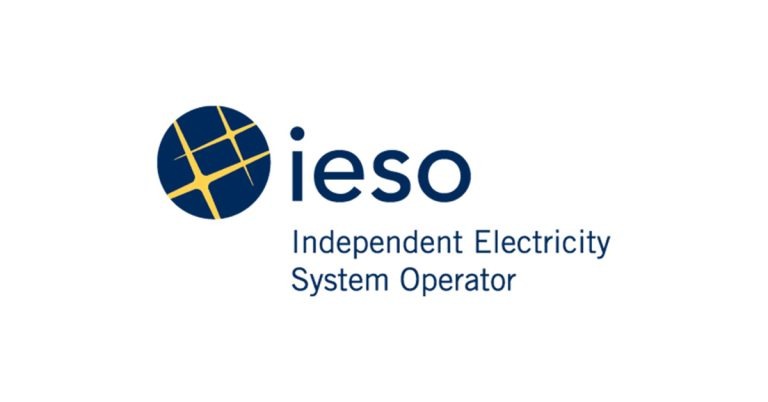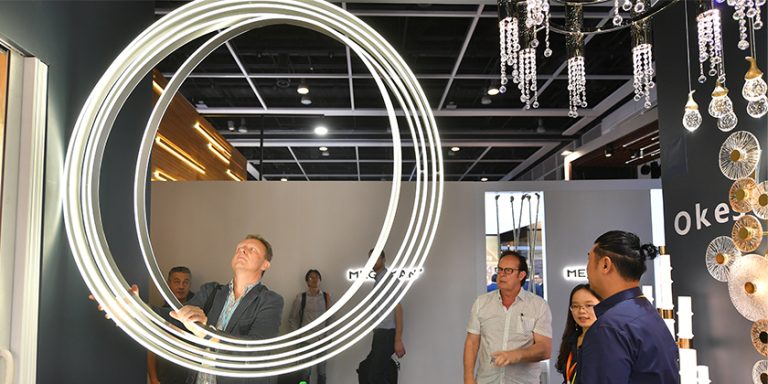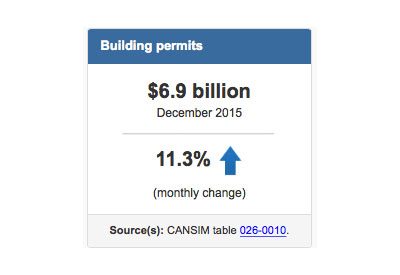A New Sales Pitch

Jan 26, 2021
By Liesel Whitney-Schulte and Dan Mellinger
Insanity, the saying goes, is doing the same thing over and over but expecting different results. While online sources debate whether or not that quote belongs to Albert Einstein, it doesn’t take a genius to see some truth in it. Marketing efforts to expand the reach of lighting controls might be a case in point.
For years, utilities, energy efficiency advocates and others have tried in vain to increase the market share of basic lighting controls in existing buildings — primarily by touting the technology’s energy benefits. Year after year, most customers haven’t been swayed to invest in an energy-saving technology that is not well understood or accepted, and which seems of little value to their core business.
According to a December 2019 U.S. Department of Energy’s (DOE) report, 66% of commercial and 93% of industrial lighting in the U.S. lack any control beyond an on/off switch. Despite updated code requirements and decades of utility efficiency programs promoting and incentivizing occupancy sensors on the basis of energy savings, this basic control technology is associated with only about 6% of commercial lighting. Limited adoption of lighting controls may be due to many factors, such as negative perceptions or prior experience, low perceived value, poorly placed or programmed devices, or lack of training. And, while new construction often triggers code compliance and minimum controls requirements, retrofits within many existing buildings overlook the potential additional savings and benefits from controls.
The track record of basic controls installations notwithstanding, the same DOE report expressed high hopes for newer connected (networked) lighting control technology. If DOE’s energy efficiency program goals are met, connected controls paired with LED lighting could cut U.S. electricity consumption by one quad (293 billion kilowatt-hours) by 2035, saving over US$10 billion in energy costs, according to the agency. That doesn’t include the unquantified benefits of enhanced quality of light and IoT capabilities through lighting.
That’s an immense opportunity — but one that won’t be realized without new strategies for communicating the value of lighting controls.
Currently, fewer than 10% of new construction projects and 1% of lighting retrofit projects use networked lighting controls (NLC) — this despite commercial incentives offered by more than 50 utilities across the U.S. and research showing that adding NLCs to commercial lighting projects can save an average of 47% more electricity than is possible with LEDs alone. Even with repeated promotion of NLCs as an energy saving option through utility incentives and industry events and publications, barriers such as complexity, high initial cost, and lack of standardization and interoperability have largely trumped potential energy savings in the minds of designers and end users.
Since LEDs put in today could remain in place for a decade or more, continuing to install LEDs in commercial and industrial projects without controls will strand these significant energy savings for the long term. Now is the time, therefore, to pivot from only promoting energy savings and rebates to trumpeting the non-energy benefits and capabilities of NLCs to stimulate wider adoption.
Looking beyond energy savings, the advantages of connected lighting are many. In the realm of comfort and wellbeing, NLCs enable precise control of light levels to match the needs of various populations and applications at various times of day, contributing to circadian wellness. The WELL Building Institute cites research linking disruption of the circadian rhythm with ailments ranging from diabetes and depression to obesity and sleep disorders, and notes that paying better attention to the quality of light “can contribute to improvement of the overall mood and increase the productivity of employees.”
Programmed to precisely control colour and brightness at various times of day, connected lighting can ensure the right amount of light only when and where it is needed. But these needs vary by user type and so should the promotional tactics. Benefits of connected lighting need to be aligned with the user type, and while the energy story may help finance the project the real selling points may not be related to energy at all.
NLCs are also a pathway to more intelligent use of building space and better building diagnostics. Through NLCs, for example, building managers can receive daily diagnostic reports about lights that need attention, and can easily reconfigure lighting in response to changes in the space or to address occupant complaints. NLC technology also allows data sharing with other facility systems and with building occupants, enabling “smart building” functions ranging from space utilization and asset tracking to wayfinding, building security, emergency assistance, and integration with HVAC and other building systems, all of which help buildings operate more intelligently and provide meaningful value to business owners and facility managers.
Communicating the non-energy benefits to potential purchasers and installers is vital to spurring adoption of NLCs. To be most successful, more thoughtful education and marketing is needed, matching specific benefits of NLCs to the specific needs of various user types. Focusing on NLC benefits that are unique to specific customer vertical markets can broaden the reach of this underutilized energy-saving technology — and do so in a way in which resulting energy savings are simply a way to help finance the project, a byproduct of decisions customers make for a variety of non-energy reasons. Consider, for example, the promotion of insulation upgrades to homeowners by emphasizing the highly valued benefits of comfort and warmth.
Healthcare is an excellent illustration of this. While energy efficiency is a “nice to have” benefit for hospitals, nursing homes and other healthcare facilities, their main concern is improving patient outcomes. Selling these facility managers or investors on the non-energy benefits of NLCs that may positively impact their core business is likely to be much more effective in increasing the rate of NLC installations in the health-care industry. This value takes various forms, from enabling tunable lighting that improves sleep and reduces agitation in nursing home patients (see the DOE study Measuring Light Exposure and Its Effects on Sleep and Behavior in Care Center Residents, to asset tracking sensors that allow hospital nurses to more quickly locate life-saving equipment in emergencies.
Likewise, companies are more likely to appreciate NLCs for their contribution to worker comfort and satisfaction than for their ability to cut electricity consumption, given the widely accepted $3/$30/$300 formula regarding corporate spending per sq ft of commercial office space on energy, real estate and employee costs, respectively. An employer in a large office building, for example, may appreciate that employees can simply consult a phone app linked to NLC sensors to locate a free meeting room for a quickly scheduled meeting, rather than spending valuable time searching the corridors for unoccupied space. Or, that an employee’s productivity may be increased by lighting that enhances occupant mood and wellbeing.
As companies seek to reconfigure commercial office space to accommodate COVID-19 protocols, installing NLCs with new LED lighting creates an opportunity for easy reconfiguration in the future, and data collected through NLCs can provide valuable information about specific occupancy conditions to assist in this process. This could be extremely helpful for commercial real estate portfolio managers.
For municipalities, meanwhile, it’s important to communicate a different set of benefits derived from NLCs. Cities and towns are interested in saving energy costs, but their core business is the safety and wellbeing of their citizens. With sensors located in lighting throughout public buildings and parks and in streetlights, NLCs can collect actionable data that improves public safety and security and improves the quality of indoor and outdoor lighting.
In its December 2019 Energy Savings Forecast of Solid-State Lighting in General Illumination Applications report, the DOE projected that connected LED lighting will comprise more than three quarters of both commercial and industrial lighting by 2035, assuming the agency’s accelerated adoption strategy is followed.
“While still emerging, connected lighting provides a large opportunity for energy savings in the U.S.,” the report states. “The controllability of LED technology, as well as the low cost to integrate sensing, data processing, and network interface hardware will help overcome many of the existing barriers to utilizing lighting controls.”
We would add to that list of barrier jumpers the need for supporting lighting quality and cybersecurity standards (underway now through the DLC’s Solid State Lighting Technical Requirements V5.0/5.1 and its NLC5 policies), as well as a concerted effort to effectively communicate the non-energy benefits of NLCs to an array of specific audiences through targeted marketing.
Employing a differentiated marketing strategy that develops and deploys different value propositions for NLCs for various individual market sectors increases the chances of marketing success — a course of action that will significantly increase adoption of a largely untapped technology that is a potential game changer from energy and non-energy perspectives alike.
This article was first published online by the Illuminating Engineering Society’s LD+A Magazine; www.ies.org. Liesel Whitney-Schulte, LC, is the program director for the DesignLights Consortium, where her responsibilities include oversight of stakeholder outreach and engagement; program design, development and management; and providing support for the Solid-State Lighting Qualified Product List and Networked Lighting Controls programs to help advance quality lighting products in the market. Dan Mellinger, PE, LC, is a principal at Energy Futures Group, and a national lighting technologies expert who specializes in the design, planning and analysis of commercial and industrial energy efficiency programs, technologies and markets.
Photo by krakenimages https://unsplash.com/@krakenimages?utm_source=unsplash&utm_medium=referral&utm_content=creditCopyText on Unsplash











